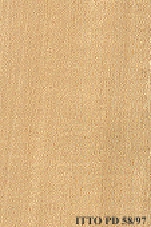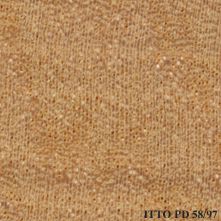
GUATAMBú (Balfourodendron riedelianum)
Trade Name
Guatambú
Scientific Name
Balfourodendron riedelianum (Engl.) Engl.
Family
RUTACEAE
Common Names
Quatamba; Pequia marfim; Pao marfim; Pao liso; Moroti; Marfim; Ivorywood; Ibiranoti; Ibira-nete; Guatambu moroti; Guatambu blanco; Guatambu; Guataia; Gramixinga; Farinha-seca; Piquiá Marfim (Brazil); Pau Liso (Brazil); Guatambu Branco (Brazil); Pau Marfim (Brazil); Ivory Wood
Scientific Name Synonyms
Helietta multiflora Engl.; Esenbeckia riedeliana Engl.
Description Of The Tree
Botanical Description
The trees are reported to reach heights of 20 to 30 m, with trunk diameters ranging from 40 to 90 cm. They develop well-formed and cylindrical boles, up to one half of the height of the tree.
Natural Habitat
Balfourodendron riedelianum is a pioneer species, found in clear areas of primary forests or in secondary forests. It is known or inferred that the harvesting of specimens from the wild for international trade has, or may have, a detrimental impact on the
Natural Distribution
This species is reported to occur in Brazil, in the forests of Minas Gerais, Mato Grosso do Sul, Rio Grande do Sul and also along the Parana basin.
Non Timber Uses
Dermatitis, respiratory effects
Wood Identification
Anatomic Description Of Wood
Wood diffuse porous. Occasionally vessels in diagonal and/or radial pattern. Occasionally wood semi-ring porous and/or ring porous. Vessels in radial multiples of 4 or more common. Tangential diameter of vessel lumina 100 micras or less (very small). Vessels p Axial parenchyma in marginal or in seemingly marginal bands. Paratracheal axial parenchyma scanty and/or vasicentric. Prismatic crystals in chambered axial parenchyma cells and/or in fibers. 3 to 4 cells per parenchyma strand. 4 to 10 rays per mm (medium). Rays 1 to 4 seriate. Prismatic crystals in the ray cells. Body ray cells procumbent with mostly 2 to 4 rows of upright and/or square marginal cells (Kribs-II). Fibers with simple to minutely bordered pits.
-
 Wood Macro Photo Tangential Plane
Wood Macro Photo Tangential Plane
-
 Wood Micro Photo Of Transversal Section
Wood Micro Photo Of Transversal Section
Availability
Cites Status
Unrestricted
General Wood Description
Odor
It does not have a peculiar smell, but has a bitter taste.
Color
The sapwood is non differentiated, the timber is nearly white to yellow in color, occasionally with dark streaks.
COLOR INDEX (1=Black, 7=Light yellow,white)
6
Grain
The grain is straight, sometimes interlocked.
Texture
The wood is typically fine to medium in texture.
Luster
This wood is frequently moderate in luster.
Natural Durability
It is rated as moderately durable to non durable, it is susceptible to blue staining fungi.
Natural durability index (1= Very high durability, 7=Vey low durability)
6
Resistance To Impregnation
The heartwood is reported to be moderately permeable, but the sapwood is treatable.
Wood Physical Properties
Basic Density or Specific Gravity (O.D. weight/vol. green) (g/cm³)
0.74
Air-dry Density (Weight and volume at 12%MC) (g/cm³)
0.84
Total shrinkage Tangential (Saturated to 0%MC) (%)
9.6
Total shrinkage Radial (Saturated to 0%MC) (%)
4.9
Drying Defects
Ease of Drying: This species is reported to be easy to dry, sometimes end checking can occur. Drying Defects: Slight risk of warping and checking. Casehardening is reported when drying thick pieces over 50 mm.
Recommended Dry Kiln Schedule
US-T6-C3; UK-E
Dimensional stability ratio (Total Tangential Shrinkage %/Total Radial Shrinkage %)
2.0
Wood Chemical Properties
Wood Mechanical Properties
Bending Strength (MOR),12%MC (kgf/cm²)
1399
Compression parallel to fiber 12%MC (kgf/cm²)
601
Workability
Sawing
Sawing of this species is easy.
Blunting Effect
The wood has a slight blunting effect.
Machining
This species is easy to machine.
Planing
This species is easy to plane.
Moulding
Tearing can occur if interlocked grain is present
Nailing
It is difficult to nail, pre-boring is recommended.
Gluing
Gluing behavior is reportedly good.
Finishing
This species is reported to be easy to finish.
Staining
The behavior in staining is fair.
Coatings
It paints and varnishes well.
Polishing
This species is reported to be easy to polish.
Steam Bending
Steam bending of this wood is possible.
Substitute Species
It is suggested as a substitute for Rock Maple, Sycamore or Boxwood.
REFERENCED USES
End Uses Summary
FURNITURE AND CABINETS, TOOLS, tool handles, agricultural tools, NAVAL CONSTRUCTION
Furniture Cabinets
- 21 - Tropical timbers of the world. Part III-Southeast Asian and Oceanian Species.
Tools
- 42 - Utilización Industrial de Nuevas Especies Forestales en el Perú.
Tool Handles
- 43 - Maderas de Bolivia (Características y Usos de 55 Maderas Tropicales)
Agricultural Tools
- 44 - Atlas of Peruvian Woods
Shipbuilding
- 55 - Tropical Timber Atlas of Latin America
Please Provide Information To View Producer Information